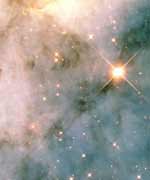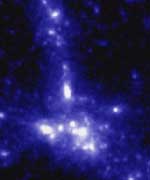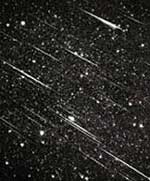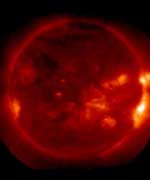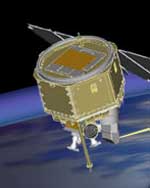
Image credit: NASA
NASA has selected five proposals as part of its Small Explorer (SMEX) missions – these are low-cost, highly specialized missions to help advance science in a specific area. The candidates are: the Normal-incidence Extreme Ultraviolet Spectrometer, the Dark Universe Observatory, the Interstellar Boundary Explorer, the Nuclear Spectroscopic Telescope Array, and the Jupiter Magnetospheric Explorer. Two finalists will eventually be chosen for launch by 2007-2008.
NASA recently selected candidate mission proposals that would study the universe, from Jupiter and the sun to black holes and dark matter. The proposals are candidates for missions in NASA’s Explorer Program of lower cost, highly focused, rapid-development scientific spacecraft.
Following detailed mission concept studies, NASA intends to select two of the mission proposals by fall 2004 for full development as Small Explorer (SMEX) missions. The two missions developed for flight will be launched in 2007 and 2008.
NASA has also decided to fund as a “Mission of Opportunity” a balloon-borne experiment to detect high-energy neutrinos, ghostly particles that fill the universe.
“The Small Explorer mission proposals we received show that the scientific community has a lot of innovative ideas on ways to study some of the most vexing questions in science, and to do it on a relatively small budget,” said Dr. Ed Weiler, associate administrator for space science at NASA Headquarters, Washington. “It was difficult to select only a few from among the many great proposals we received, but I think the selected proposals have a great chance to really push back the frontiers of knowledge,” he said.
The selected proposals were judged to have the best science value among 36 submitted to NASA in February 2003. Each will receive $450,000 ($250,000 for the Mission of Opportunity) to conduct a five-month implementation feasibility study. The selected SMEX proposals are:
- The Normal-incidence Extreme Ultraviolet Spectrometer (NEXUS): a solar spectrometer with major advances in sensitivity and resolution to reveal the cause of coronal heating and solar wind acceleration. Joseph M. Davila of NASA’s Goddard Space Flight Center (GSFC), Greenbelt, Md., would lead NEXUS at a total mission cost to NASA of $131 million.
- The Dark Universe Observatory (DUO): seven X-ray telescopes to measure the dark matter and dark energy that dominate the content of the universe with 100 times the sensitivity of previous X-ray studies. Richard E. Griffiths of Carnegie Mellon University, Pittsburgh, would lead DUO at a total mission cost to NASA of $132 million.
- The Interstellar Boundary Explorer (IBEX): a pair of cameras to image the boundary between the solar system and interstellar space with 100 times the sensitivity of previous experiments. David J. McComas of the Southwest Research Institute, San Antonio, would lead IBEX at a total mission cost to NASA of $132 million.
- The Nuclear Spectroscopic Telescope Array (NuSTAR): a telescope to carry out a census of black holes with 1000 times more sensitivity than previous experiments. NuSTAR would be lead by Fiona Anne Harrison of the California Institute of Technology, Pasadena, at a total mission cost to NASA of $132 million.
- The Jupiter Magnetospheric Explorer (JMEX): a telescope to study Jupiter’s aurora and magnetosphere from Earth orbit. Nicholas M. Schneider of the University of Colorado at Boulder would lead JMEX, at a total mission cost to NASA of $133 million.
NASA selected a long-duration balloon payload as the mission of opportunity. The Antarctic Impulsive Transient Antenna (ANITA) would detect radio waves emitted when high-energy neutrinos interact in the Antarctic ice shelf. ANITA would be led by Peter W. Gorham of the University of Hawaii at Manoa in Honolulu, at a total mission cost to NASA of $35 million.
In addition, NASA selected a proposed mission for technology-development funding of the proposed instrument. Jean Swank of GSFC will develop a polarization sensitive X-ray detector. Swank will receive up to $300,000 over the next two years for her study.
The five selected SMEX proposals are vying to be the tenth and eleventh SMEX missions selected for full development. Recent selections include the Reuven Ramaty High Energy Solar Spectroscopic Imager (RHESSI), launched in February 2002; the Galaxy Evolution Explorer (GALEX), launched in April 2003; and the Aeronomy of Ice in the Mesosphere mission (AIM), to be launched in 2006. The Explorer Program, managed by GSFC for NASA’s Office of Space Science, is designed to provide frequent, low-cost access to space for physics and astronomy missions with small to mid-sized spacecraft.
Original Source: NASA News Release


